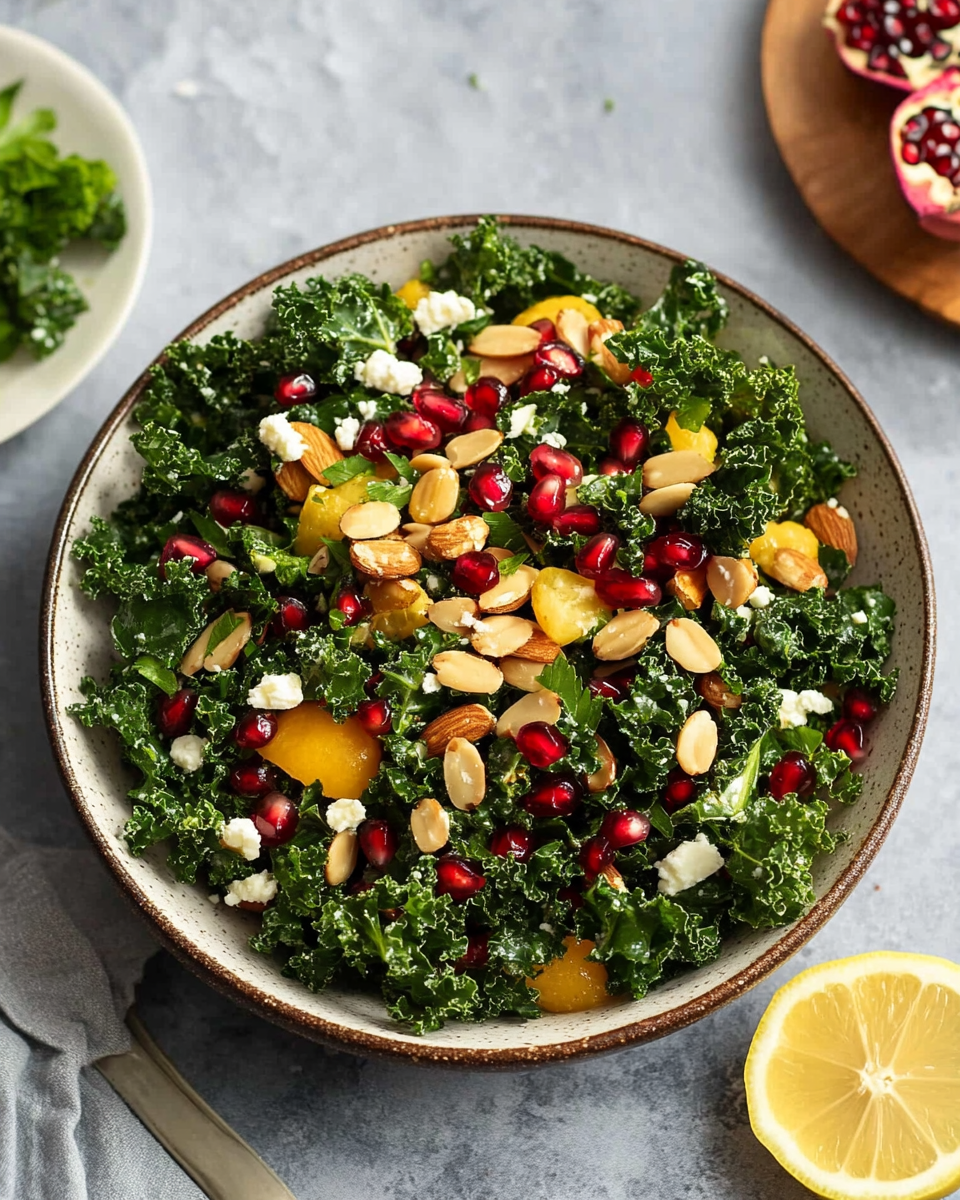Kale Salad: A Nutrient-Packed Delight for Every Meal
Kale, once considered a humble garnish, has firmly established itself as a powerhouse of nutrition and flavor. This leafy green is celebrated not just for its bold, slightly bitter taste, but for its impressive health benefits and versatility in the kitchen. Kale salad, in particular, has become a staple in many homes and restaurants, providing a fresh, satisfying base for a variety of toppings and dressings. Whether you enjoy it as a side dish or as the star of your meal, kale salad is a delightful and nutritious choice. In this article, we will explore why kale is so beneficial, how kale salad can fit into various dietary plans, and how you can customize this dish to suit your taste and preferences.
The Health Benefits of Kale Salad
Kale is often referred to as a “superfood,” and for good reason. This leafy green is packed with nutrients that support overall health and well-being. One of the standout qualities of kale is its high vitamin content. It is rich in vitamins A, C, and K, all of which play important roles in maintaining a healthy immune system, promoting skin health, and supporting proper blood clotting. In addition to these vitamins, kale is also an excellent source of antioxidants, which help to protect the body against oxidative stress and inflammation.
Kale is also incredibly high in fiber, which is essential for digestive health. Fiber helps regulate bowel movements, reduce bloating, and maintain a healthy gut microbiome. This fiber content also helps to lower cholesterol levels, making kale a heart-healthy food. Furthermore, kale contains a good amount of calcium, iron, and magnesium, minerals that support bone health, energy production, and overall bodily functions.
Incorporating kale into your diet, particularly in the form of a kale salad, can provide a host of health benefits, including improved digestion, enhanced immune function, and support for bone health. The combination of vitamins, minerals, and antioxidants in kale makes it a top choice for anyone looking to boost their nutrient intake.
Kale Salad as a Versatile Dish
One of the best things about kale salad is its versatility. Unlike some salads that rely on delicate greens or leafy vegetables, kale holds up well to robust dressings and toppings. Its hearty texture means it can be massaged with dressings without wilting too quickly, making it an excellent option for meal prepping or making ahead of time.
Kale salad can be as simple or as elaborate as you like. For a basic salad, you can combine kale with a light vinaigrette, some toasted nuts or seeds, and a sprinkle of cheese or nutritional yeast. If you prefer a more filling salad, add roasted vegetables, grains like quinoa or farro, or a source of protein such as grilled chicken, tofu, or chickpeas. The combination of kale’s earthy taste with a variety of textures and flavors makes it easy to create a salad that fits your personal preferences.
The beauty of kale salad lies in its adaptability. You can make it as light or as hearty as you wish, and it pairs well with virtually any protein or grain. This makes it a great addition to any meal, whether you are looking for a refreshing side dish or a satisfying main course.
Kale Salad and Special Diets
Kale salad is not only delicious and nutritious but also incredibly accommodating to various dietary needs. Whether you follow a vegetarian, vegan, gluten-free, or paleo diet, you can easily modify a kale salad to suit your preferences.
For those following a vegan or plant-based diet, kale salad is a great option. Simply skip the cheese and use a plant-based dressing or a simple olive oil and lemon vinaigrette. You can also add protein-packed toppings such as chickpeas, tempeh, or avocado to make the salad more filling.
For individuals with gluten sensitivities, kale salad is naturally gluten-free, making it an excellent choice for those on a gluten-free diet. You can further enhance the dish with gluten-free grains like quinoa or brown rice, or even top it with gluten-free croutons for added crunch.
Kale salad is also suitable for those on a paleo diet. By skipping ingredients like cheese and grains, and focusing on fresh vegetables, nuts, and healthy fats, you can easily create a paleo-friendly version of this salad. For extra flavor and protein, you can top it with grilled chicken, steak, or a poached egg.
Kale salad’s ability to cater to a variety of dietary needs makes it a go-to choice for families and individuals with diverse dietary preferences.
How to Customize Your Kale Salad
One of the most exciting aspects of kale salad is the endless possibilities for customization. You can tailor the salad to your taste preferences or experiment with new ingredients each time you make it. Below are some ideas for customizing your kale salad:
-
Add protein: For a complete meal, add protein to your kale salad. You can opt for plant-based proteins like chickpeas, lentils, or tofu, or choose animal-based proteins such as grilled chicken, salmon, or shrimp.
-
Incorporate grains: For extra texture and nutrition, add cooked grains such as quinoa, farro, or bulgur. These grains provide additional fiber, protein, and essential nutrients.
-
Top with fruit: Kale salad pairs beautifully with a variety of fruits. Add sliced apples, pears, or citrus for a burst of sweetness. Pomegranate seeds, dried cranberries, or grapes also make great additions.
-
Include nuts and seeds: Toasted nuts and seeds add a satisfying crunch to kale salad. Consider adding almonds, walnuts, sunflower seeds, or pumpkin seeds for extra texture and healthy fats.
-
Dress it up: The dressing is key to bringing all the flavors together in your kale salad. While a simple olive oil and lemon vinaigrette works wonders, you can also try balsamic vinegar, tahini dressing, or a creamy avocado-based dressing for variety.
-
Spice it up: If you enjoy a little heat, add a pinch of chili flakes or a drizzle of hot sauce to your salad. The spiciness will complement the earthy flavor of the kale and enhance the overall taste.
The beauty of kale salad is that you can mix and match ingredients based on what you have on hand or what you’re in the mood for. The combination of kale with various toppings allows you to create a dish that is both exciting and nourishing.
Kale Salad as Part of a Balanced Diet
Including kale salad in your regular meal plan can be a great way to add variety and balance to your diet. The fiber content in kale helps keep you feeling full and satisfied, while the vitamins and minerals support your body’s overall health. The low calorie and high nutrient density of kale also makes it an excellent choice for anyone looking to maintain a healthy weight.
Because kale is so nutrient-dense, it’s also a great food to incorporate into detox and cleansing diets. Its high water content helps with hydration, while the fiber aids in digestion and elimination. Kale’s natural antioxidants can also help the body’s detoxification processes, making it a perfect food for anyone looking to reset their system.
Conclusion
Kale salad is a nutritious, versatile, and delicious dish that can easily be incorporated into any diet. Whether you enjoy it as a side or a main course, kale provides a wealth of health benefits that support your immune system, digestive health, and overall well-being. The versatility of kale salad means you can adapt it to suit your tastes and dietary needs, making it a perfect option for anyone looking for a light, satisfying meal. From its hearty texture to its rich nutrient profile, kale salad is sure to become a favorite in your kitchen. So go ahead, toss some kale into your next salad, and enjoy the flavors and health benefits it has to offer.






